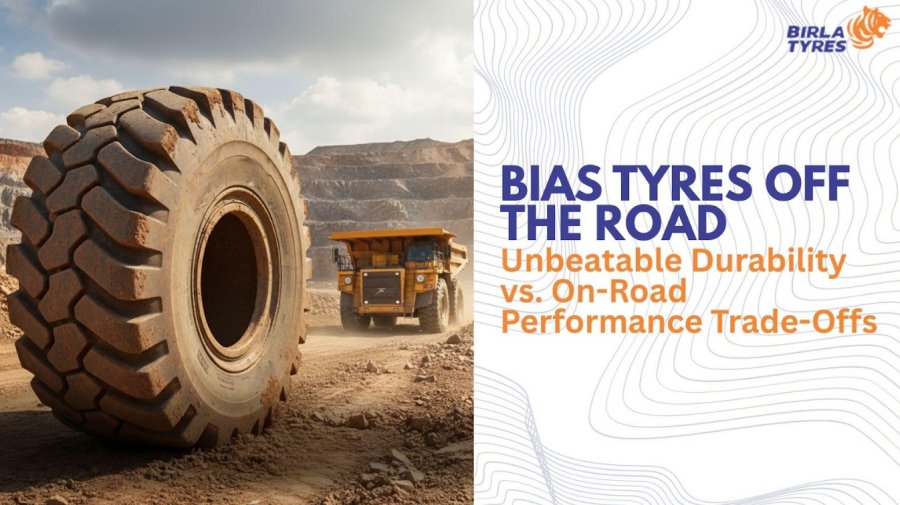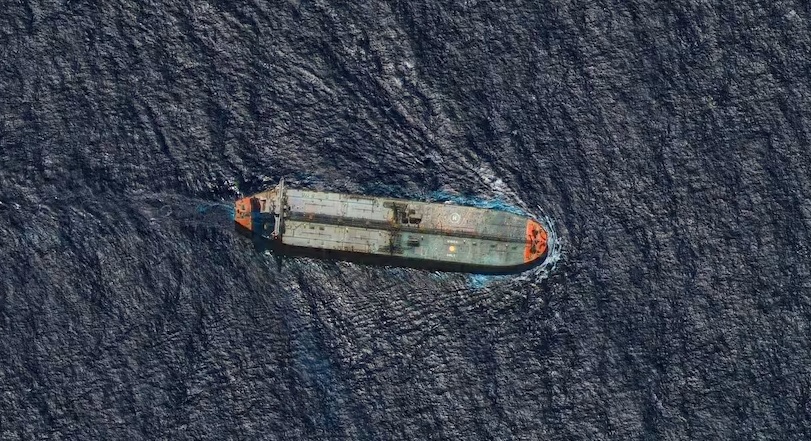Bias Tyres Off the Road: Unbeatable Durability vs. On-Road Performance Trade-Offs

Every purchase has an upside and some trade-offs. This common truth applies to your purchase of tyres as well. When it comes to equipping your off-road fleets, mining vehicles, and agriculture vehicles (tractors), off the road tyres are the best.
Criss-cross ply design and durable ply constructions make bias tyres the leading workhorses in rugged and off-road terrains. Their construction materials are unique, and the tread patterns are well thought out, making them the best choice when your vehicle has to navigate rugged roads.
However, bias tyres come with some trade-offs, such as firmer ride and different fuel efficiency behaviour. Fleet managers, logistics professionals, and transport owners must understand what sets bias tyres apart from radial tyre constructions. Most importantly, it’s critical to understand how much the trade-offs will compromise your experience.
Bias Tyre Engineering: Secrets Behind Durability
Bias tyres focus on durability and strength from their primary phase of construction. These tyres have thick layers of structural fabric arranged diagonally and overlapped from bead to bead. The construction itself prepares a strong shield of protection around the tyre.
Typically made with materials like nylon, polyester, or rayon, bias ply construction forms formidable sidewalls and a flexible carcass that can absorb the abuse of potholes, sharp debris, and stony ground.
Thanks to this multi-layer construction, bias tyres are durable and efficient in environments where damage and hazards are the norm. These tyres are efficient at withstanding cuts, impacts, and irregular surfaces comparatively better than most tyres with a radial construction.
1. Key Engineering Advantages
Sidewall Strength: This tyre construction follows a multi-layered diagonal shield that protects the tyre from getting any gashes, off-road routes, and damage.
Impact Absorption: Bias tyres are excellent at absorbing impacts on rough and rocky roads. The criss-cross and multi-layered design makes bias tyres durable against impacts and cuts, reducing the chances of failure and blowouts on the road.
Heavy Load Handling: Tyres in the agriculture, construction, and mining sectors depend on the heavy loading capacity of the tyres. Vehicles in these sectors operate on terrains that frequently fluctuate the load distribution of the vehicle onto different parts of the tyre.
But, bias tyres can solve this problem through even distribution of the vehicle’s weight across the tyres. It resists deformation and equips the tyre with a longer life. Furthermore, fleets or mining vehicles don’t have to worry about vehicle failure disrupting operations.
2. Off-Road Advantages
Vehicles operating in off-road environments enjoy these benefits constantly:
Unmatched Traction and Ruggedness: Bias tyres have a stronger grip in loose soil thanks to more contact with the surface and sidewall flexibility. These tyres work efficiently on soil, mud, or gravel, enhancing stability and maneuverability.
Reliability Under Abuse: Fleet downtime is a serious problem for fleet managers operating logistics or supply chains. It cripples operations and reduces return on investment (ROI). These tyres are built with a robust and durable design, giving the tyres a longer lifespan and making them require fewer replacements.
Cost-Effectiveness for High-Risk Operations: Bias tyres are cost-effective. The initial affordability and lower maintenance requirements make them a good choice for off-road use. They are resistant to wear and tear. Additionally, these tyres perform well in unpredictable terrains, providing a hassle-free experience to the drivers and the fleet operators.
Retreading Suitability: Commercial Bias tyres are retreadable. This feature makes them useful solutions for commercial fleet owners in the long run.
3. Maintenance and Repair
It’s important to admit that no tyres are indestructible. However, bias tyres are partially amenable to repairs. You can take care of very minimal damage to the sidewall, tread separations, cuts, and ply exposure. However, it’s essential to regularly inspect the tyres and reduce damage to increase the lifespan of the tyres.
When you have a proper routine, quick checks, and maintenance procedures in place, the technicians will have much better capabilities to maintain fleet integrity.
Choosing the Right Tyre for Your Needs
If you are considering durability, and performance on versatile terrains, then bias tyres are undoubtedly the ideal option. Well, the decision is completely dependent on your needs.
Think of your business operations and where your vehicles operate the most. If the bulk of your vehicles operate in rugged and difficult roads, choose the bias tyres. But if your vehicles are running more on highways, go for a radial tyre construction.
Check the Simple decision matrix we have created to help you decide whether your vehicle needs bias tyres or radial tyres.
Quick Decision Matrix
| Condition | Bias Tyre |
| Off-road, rough terrain | ✅ |
| Heavy load, low speed | ✅ |
| Frequent highway use | ✅ |
| High-speed | ❌ |
| Cost-sensitive, high wear | ✅ |
| Comfort & fuel efficiency | ❌ |
Comfort & fuel efficiency should not be the parameter if your vehicle is working on OTR conditions. However, the decision matrix suggests bias tyres There you need strong tyres with proper grip.
Balancing Between Efficiency, Safety, and ROI?
If the answer is yes, and if you’re operating a fleet constantly navigating off-road environments, Bias Tyres are the best solution. Bias tyres reduce maintenance costs, balancing out expenses on unpredictable blowouts or failures.
Finally, the off-road reliability and consistent performance on off-road terrains minimize failures and operational downtimes, reducing cash outflow. Leading tyre manufacturing companies like Birla Tyres follow strict adherence to safety compliance and provide high-quality bias tyres for your specific off-road needs. Let us know if you have any other queries through the comment box.





